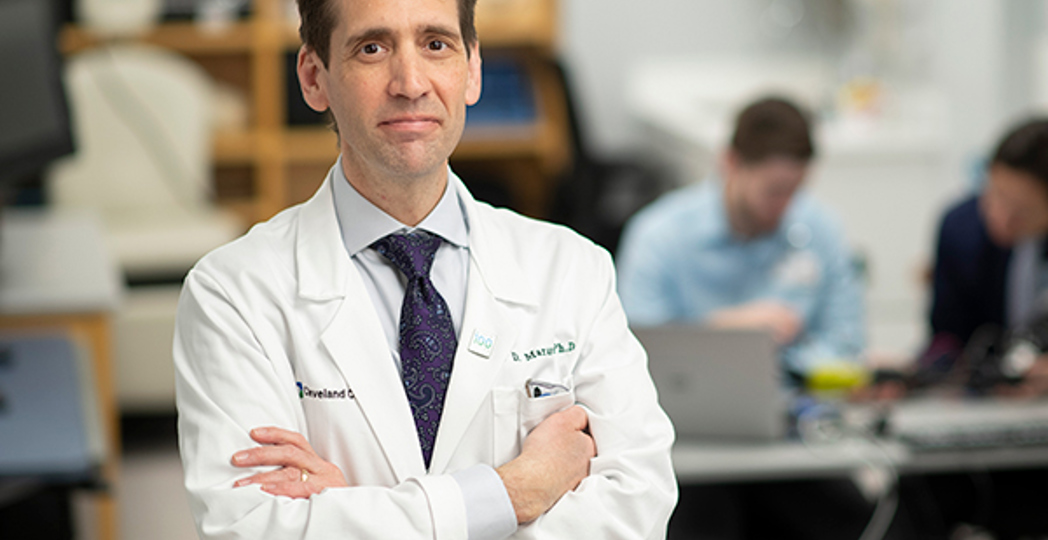Cleveland Inventions: This Bionic Arm Was the First of its Kind
by Jackson Horvat | Dec. 1, 2021 | 1:00 PM

An international team based at the Cleveland Clinic, led by Dr. Paul Marasco, first developed the idea of regaining kinesthesia, or sense of limb movement, with upper prosthetics back in 2018.
After years of work, they’ve created the first prosthetic in which motor intent, touch sensation and kinesthesia all run seamlessly together for the wearer.
“They don’t really behave like someone with an amputation,” says Marasco. “They actually behave like someone with their natural hands.”
The arm utilizes a biological neural machine interface with multiple robotic systems that interact with and stimulate reinnervated motor and sensory nerves, which gives those wearing the arm the ability to feel someone touching their prosthetic finger or be able to tell how tightly they’re gripping onto something.
Why It Matters: While these aren’t in use yet, the hope for Marasco and his team is to apply these technologies to fields some might not expect such as epilepsy or stroke rehabilitation.
Click here to learn more about 30 of Cleveland’s great inventions and innovators.
Trending
-
1
-
2
-
3
-
4
-
5










